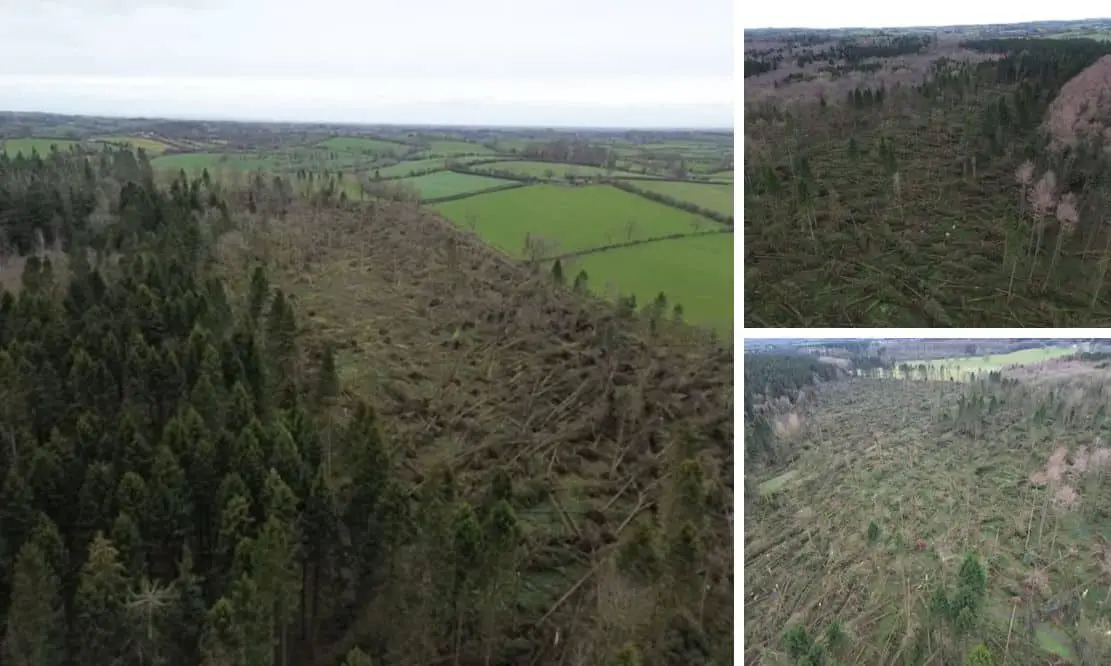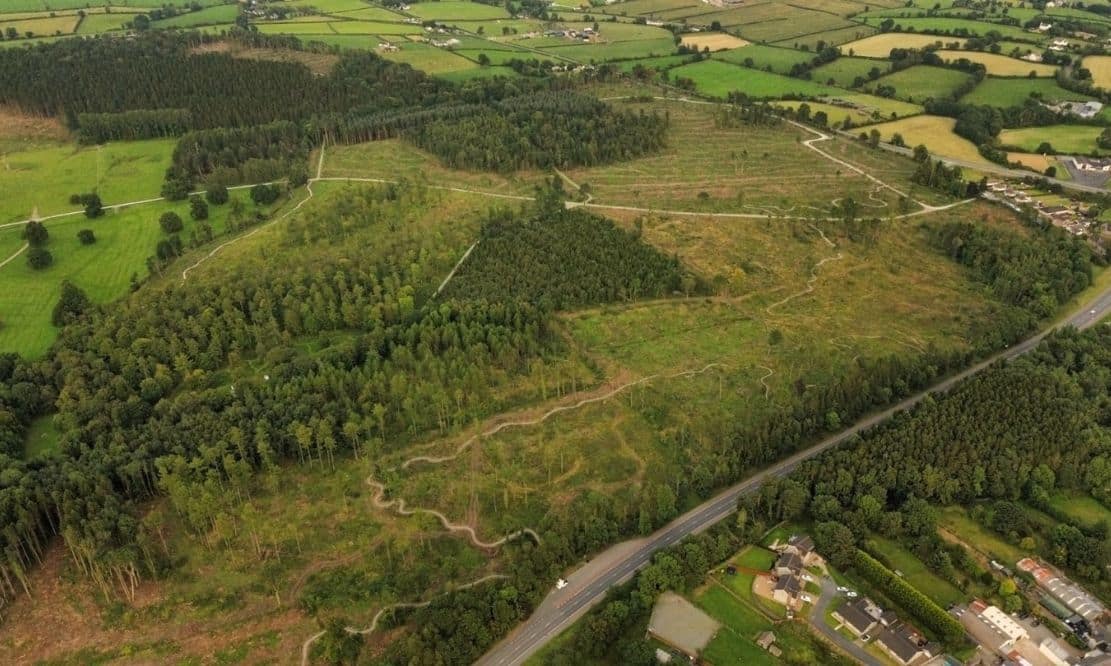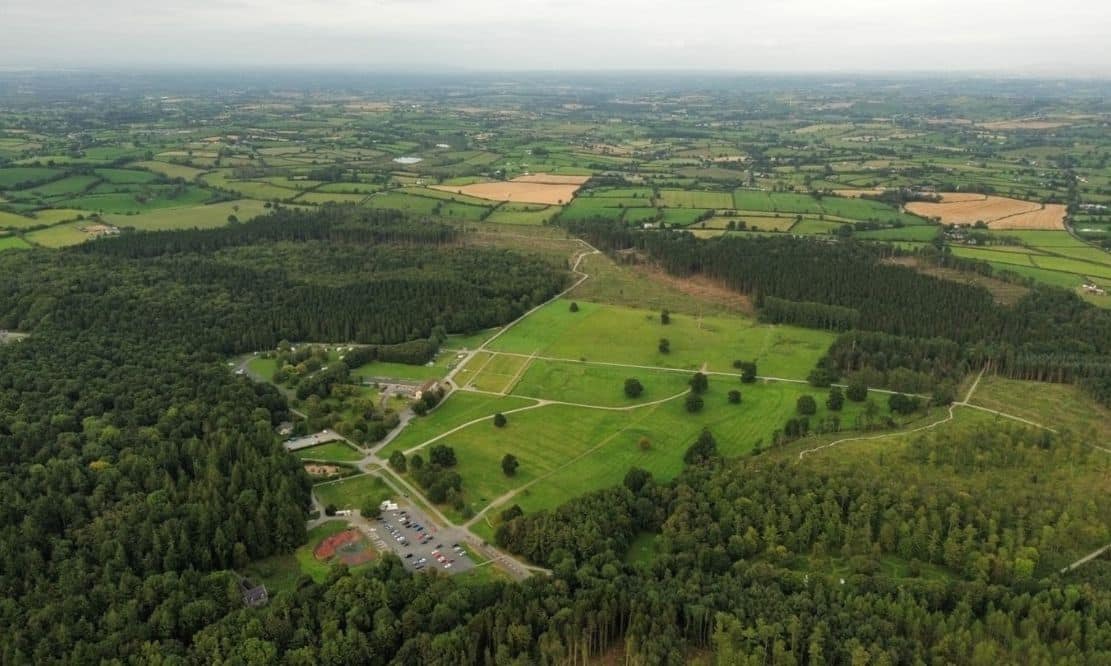
Armagh City, Banbridge and Craigavon Borough Council have been told that Gosford Forest Park could take up to 10 years to fully recover from the devastating effects of Storm Éowyn.
At the August full council meeting, councillors were informed that January’s storm had resulted in over a fifth of Gosford’s trees being lost.
Speaking at the meeting, John Joe Cassidy of the Forest Management and Inspection service explained that 51 hectares of trees, out of a total of 230 hectares, had been blown down during the storm.
Over 100,000 trees would now have to be planted to replace those destroyed.
He stated that prior to the storm occurring, a plan had been in place to gradually remove some of the trees at the park over a 60 year period to encourage natural “tree regrowth”. But this 60 year plan for the forest had to be discarded following Storm Éowyn.
Since the storm, the Forest Service have been working hard to clear the areas of the forest which most impact public safety – these include public footpaths and bike paths. Four mechanical harvesters have been used to clear the debris from the storm and will continue to be used for the foreseeable future.
The council were told that almost all public footpaths within the park have now been reopened to the public. The exception to this was a bike trail which will be closed until the end of the month.
Fears were raised during the meeting by Alderman Gareth Wilson of the DUP that the areas of Gosford most impacted by Storm Éowyn could become “a jungle” due to out-of-control weed growth.

Ariel image provided by Councillor Ratcliffe
Dawson Jones, of the Forest Service, confirmed that as Gosford’s soil was so fertile, managing weed growth in the areas of the forest which had lost a large number of trees would be the “largest challenge” over the coming years.
Mr Cassidy also explained that the Forest Service were continuing to work on plans for the future.
However, it was expected that it would take between five to 10 years before significant tree growth would be seen within the park.
He admitted that trees such as poplars and willows would grow quickly, but they were not the appropriate species for Gosford.
Councillor Peter Lavery of the Alliance Party queried whether the Forest Service were planning on planting more robust trees in the future, as extreme weather events, like Storm Éowyn, were expected to occur more frequently due to climate change.
Mr Cassidy responded to this explaining that almost all trees were impacted by Storm Éowyn: “A 200-year-old beech oak was snapped in half, 20-year-old conifers were blown down as well as 10-year-old willows.”
Going forward, the Forest Service would aim to identify the trees most suitable to conditions at the park.
Despite the destruction caused by the storm, hopes were raised that there could be some positive effects for the forest.
With conifer and Norway Spruce trees being primarily impacted by Storm Éowyn, Mr Cassidy explained that there would now be an opportunity to improve the tree diversity of the park, leaving the forest less vulnerable to being “wiped out by one disease”.
Alderman Wilson also stated that the clearance work which had been completed over the past number of months had benefitted the Gosford camping site and that the area was much lighter and brighter.
He also expressed his hope that the ongoing work to redesign the forest would result in more challenging bike trails being developed, “with higher drops and tactical stages for mountain bikers like the facilities at Rostrevor”.
Councillor Keith Ratcliffe subsequently provided an update, adding: “Storm Owen left a deep and lasting impact on Gosford Park in County Armagh.
“From the air, the scale of the devastation is unmistakable ancient trees torn from their roots, forest trails blocked and broken, and vast swathes of woodland flattened in a matter of hours.
“A total of 51 hectares of trees were lost — representing around one-fifth of the entire forest in Gosford. It’s a sobering reminder of nature’s force and the vulnerability of even the most established landscapes.
“But recovery is already on the horizon. The Forestry Service has committed to planting 100,000 new trees in the near future.

Ariel image provided by Councillor Ratcliffe
“It will take time — years, even decades — for the forest to fully recover and re-establish its former character. Yet these efforts mark a hopeful step forward.
“These aerial images [pictured above] capture a moment of loss, but also a turning point — where destruction meets renewal, and the future of Gosford begins again.
“I would like to put on record my thanks to Council Officers and staff, and to the Forestry Service, for all their work in trying to restore Gosford.”



